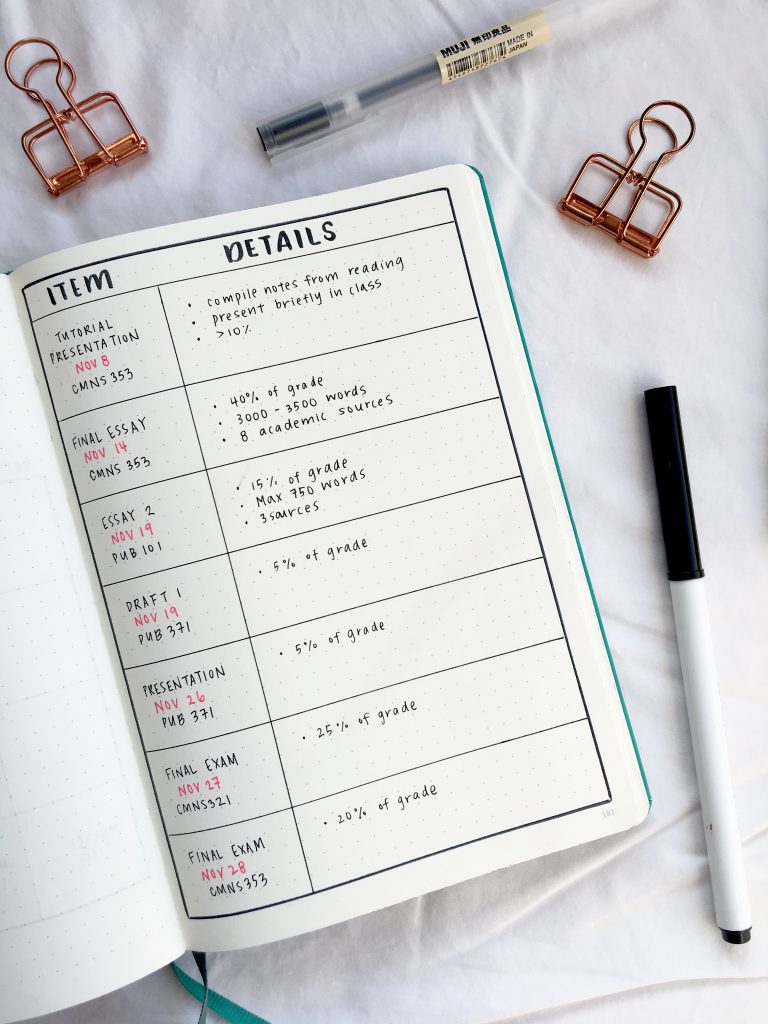By: Michelle Chiang, Peak Associate
So what exactly is hand lettering, anyways? You’ve probably seen photos of it floating around, and maybe even called it the wrong name. But it’s important to note that there’s a distinction between calligraphy and hand lettering, or “modern calligraphy,” as it’s called sometimes. Calligraphy is about having beautiful writing and often uses specific tools and scripts (Roman, Gothic, Italic, etc.) to achieve it, while lettering is about illustrating letters and words. I won’t go into the details here, but keep in mind that they’re different.
I first stumbled down the hand-lettering rabbit hole a couple years ago when I started bullet journaling. To me, it was crazy how the simple addition of a hand-lettered title could transform the page from bland to beautiful. On that day, I decided I wanted to learn how to do it myself, and so I took to Instagram to pick up the basics by watching people letter words and phrases. These days I use lettering for everything, even things that don’t need it: envelopes, birthday cards, song lyrics, bullet journaling, signage, you name it. Last semester, I lettered the titles of all my school notes. Was it necessary? No. Did I still do it? Absolutely.
Thankfully, not only does lettering look impressive, but it’s really easy to pick up as well! For beginners, I recommend following letteritwrite on Instagram. She has short videos that demonstrate how to write each letter, in multiple styles, and with different types of pens. If you prefer to have more structure though, the books Creative Lettering and Beyond and Calligraphy Made Easy are great for beginners to practice lettering. The books have nifty little instructions on the basic principles of hand lettering and also come with practice sheets for you to mimic at the end.

As for tools, it’s easy to be intimidated by the sheer amount of pens available to use, but you really only need one brush pen. A brush pen is exactly what it sounds like: a type of marker with a flexible, brush-like tip. The Tombow dual brush pens are the go-to pen of many letterers, but for beginners, I’d recommend the Pentel touch pens. It has a flexible nib and a harder brush instead of a softer brush. The bigger and more flexible the brush, the harder it is to control. Another good one to start with is the Tombow Fudenosuke and I also personally like the Faber-Castell brush pen! But if you’re stuck at home, you can definitely try out lettering just with pencils, pens, or whatever markers you have on hand. In fact, one of the more popular tools used by letterers, myself included, are actually Crayola Supertips.
For those who are hoping to really get into lettering, I’d also recommend picking up a pad of Rhodia paper. It’s a lot smoother than regular printer paper, which will help your brush pens stay in good condition.
The roughness of printer paper tends to fray the brush tips and makes it unusable. My Faber-Castell brush pen died a very sad and quick death because of this. I’d encourage people to wait until they’re sure they want to continue before buying one though, because they can be a little pricey.
Lettering is a skill that makes your handwriting a hundred times more sophisticated. Once you learn how to hand letter, you’re literally unstoppable. Letter your envelopes. Letter your school notes. Letter the wall. Really, the possibilities are endless.